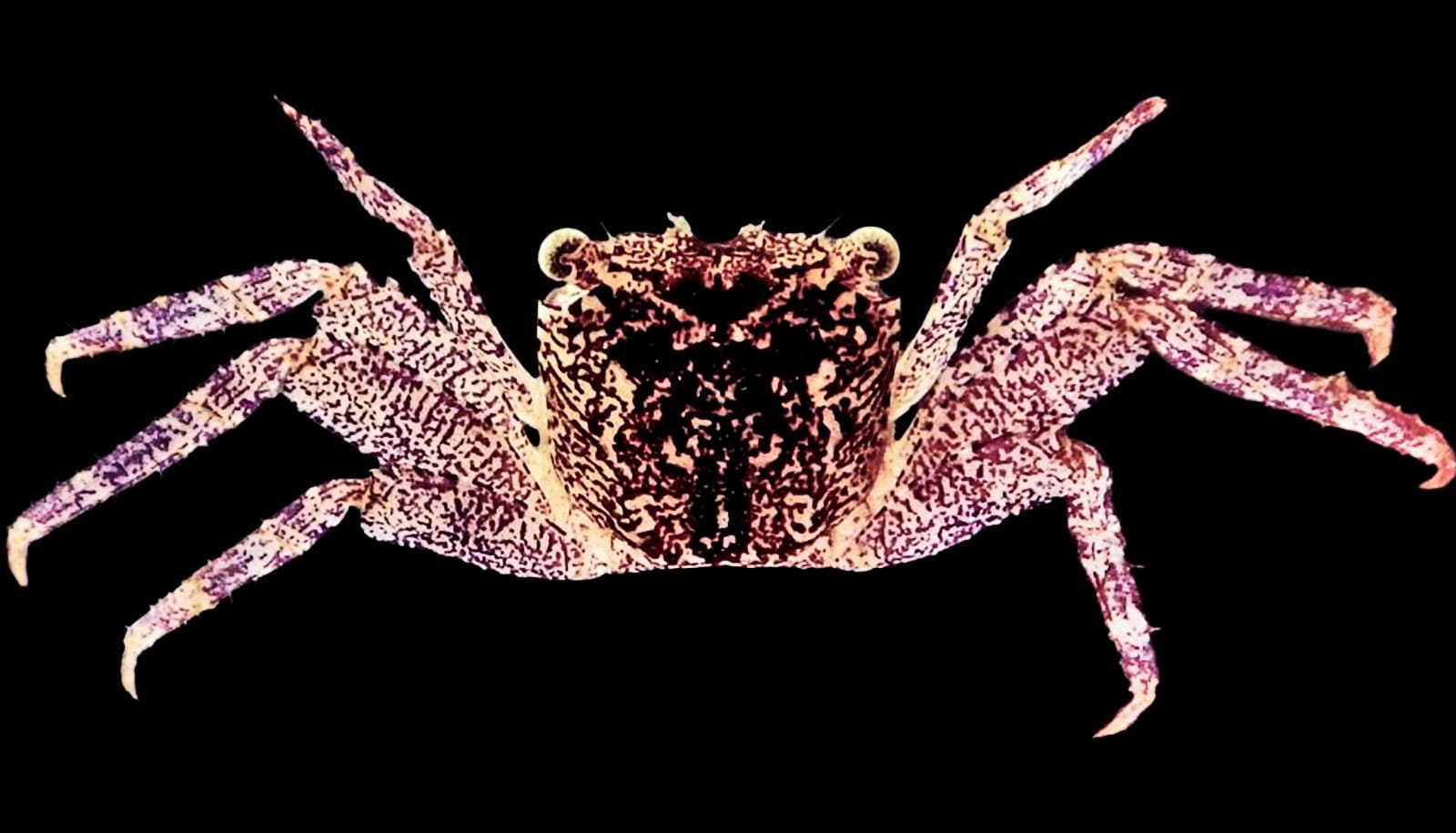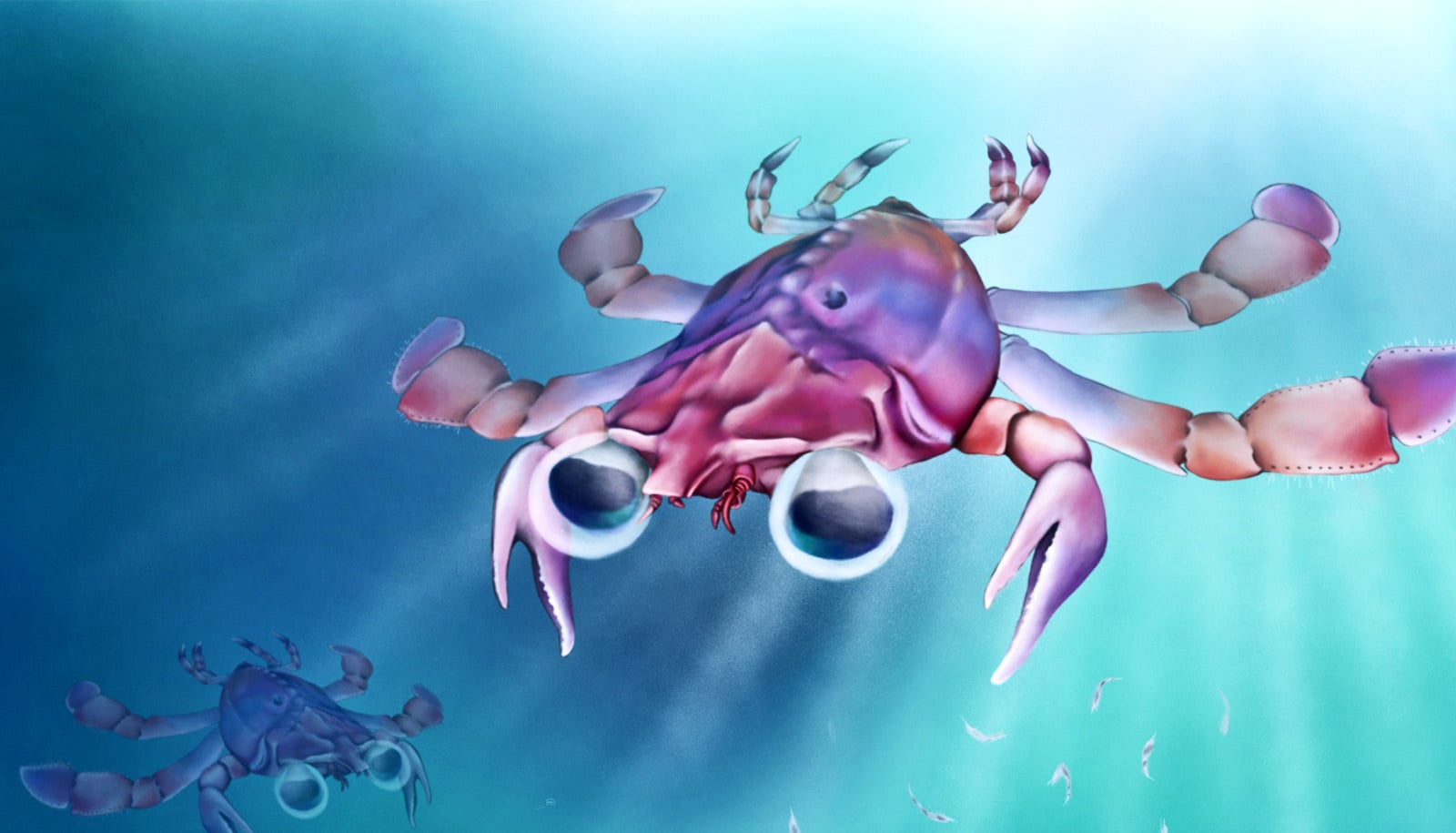Researchers found a new species of tree-spider crab, Leptarma biju, in the mangroves in Kerala, India.
Researchers from the University of Kerala collected three specimens of the crab by chance about 100 meters away from a patch of mangroves located along the mouth of the Chithari river in the Kasargod district of Kerala.
During a visit to the University of Kerala, professor Peter Ng, head of the NUS Lee Kong Chian Natural History Museum, saw the specimens. He recognized the crab as a new member of the genus Leptarma. The discovery appears in the journal Crustaceana.
“There are still many more things to discover and conserve.”
Leptarma crabs are distinguished by their long walking legs, short and hook-like dactyli—which are tips of the legs—as well as tree-climbing habits. These shared traits, along with the sighting of the crabs clinging onto the granite pillars of a bridge one meter above sea level during daytime low tide, suggested the tree-climbing nature of the new species.
The novel species is unique for the structure of its gonopods (male genital appendages), leg proportions, and eyes that extend beyond the tip of the external orbital tooth. In particular, this newly discovered species has an almost squarish carapace with a patchwork of dark purple and light yellow, long walking legs with light violet reticulate patches, and yellow dactyli.
The researchers named the new species Leptarma biju, after professor Appukuttannair Biju Kumar, dean and head of the department of aquatic biology and fisheries at the University of Kerala, who has provided strong support for crustacean research in the state for many years.
Before this discovery, there has been no other species of the genus Leptarma recorded from India. Small and cryptic, Leptarma biju remained elusive to researchers in India despite the genus being relatively well explored from extensive work by the colonials in the 1700s to 1900s. The authors theorize that it may be due to the more nocturnal habits of many of the taxa.
Ng explains, “Most mangroves are not well explored by night, because of the difficulty and dangers of navigating around the moonlit mangroves, especially in more isolated areas.”
This new finding signals how much more is unknown to us about the mangrove ecosystems in Asia. “There are still many more things to discover and conserve,” he adds.
Source: NUS

